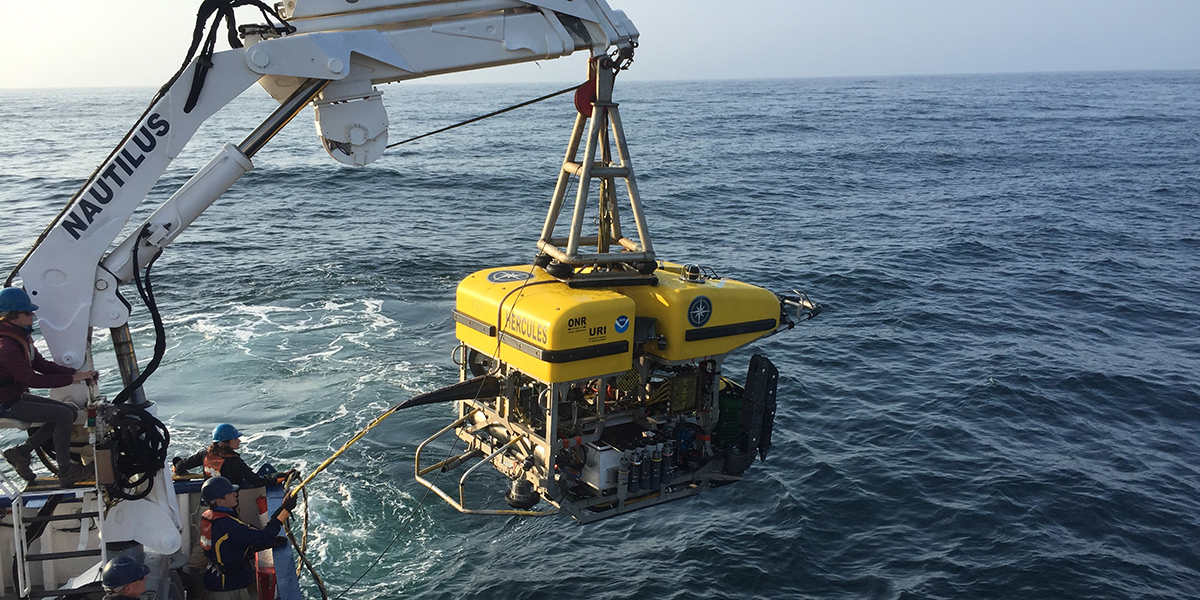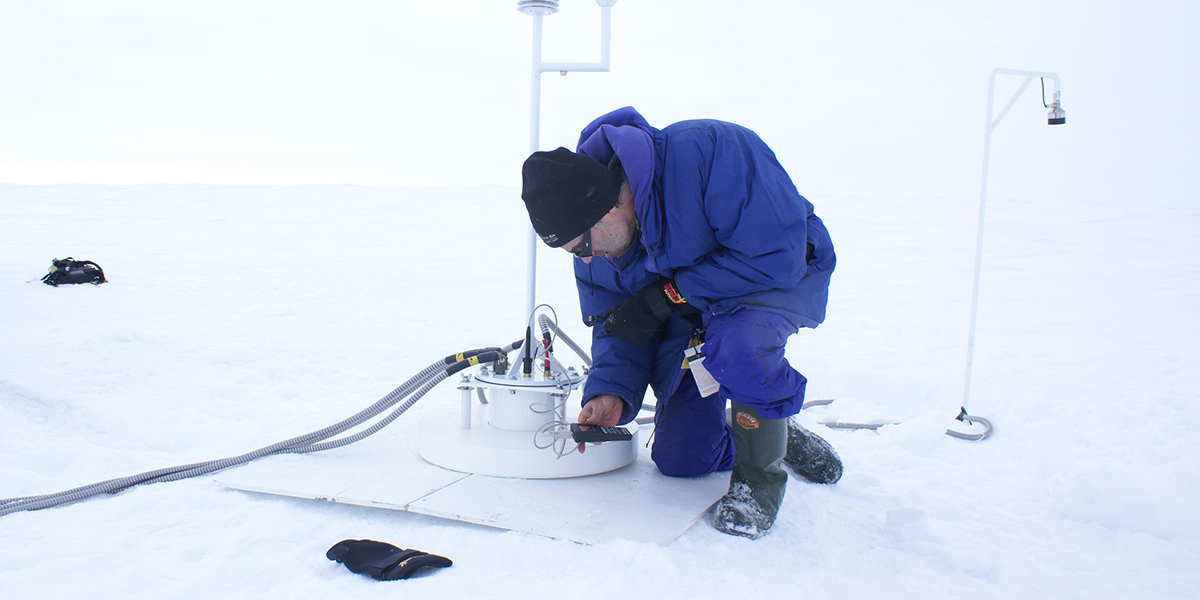Ocean technology in Canada thrives from coast to coast to coast
Canada is truly an ocean nation. With the largest Arctic Ocean territory and the longest coastline in the world, it is no surprise that the ocean technologies (oceantech) are a driver of Canada’s economy. More than seven million people call Canada’s coasts home, and a significant number of global companies, high-tech innovators, research institutes and industry associations make up an oceantech innovation ecosystem spanning from coast to coast to coast.
What is oceantech and why is it important?
The innovative technologies employed across the ocean and blue economies—whether harvesting, exploring, navigating, or studying—are referred to as oceantech. The industry and its services can include artificial intelligence, machine learning, robotics, sensors, climate modeling and forecasting, sonar, radar, marine tech, fishing technologies and marine transportation.
Around the world millions of people rely on the ocean as a source of energy, food security and transportation. The OECD valued the ocean economy’s output in 2010 at US $1.5 trillion, employing 31 million globally. Predictions indicate that “between 2010 and 2030 on a ‘business-as-usual' basis, the ocean economy could more than double, reaching over US $3 trillion and employing over 40 million.”
However, expanding economic activity within our ocean comes with a caveat of the deterioration of its health. The ocean absorbs about a quarter of the world’s CO2 emissions from human activity, causing warmer and more acidic waters. This not only impacts biodiversity but causes ripple effects that can be felt in our daily lives. Emerging technologies in the ocean economy will play a crucial role in addressing ocean-related environmental challenges.
With thriving ocean technology ecosystems on its coasts and with a commitment to environmental, social and governance (ESG) principles, Canada is positioned to be a global leader. Investors are turning to Canada to develop and deploy technologies that will lead to zero-emissions shipping, sustainable marine industries, and ultimately, greenhouse gas (GHG) reductions.
Canada’s Pacific Coast is making waves in sustainable ocean exploration
Canada’s westernmost province, British Columbia (B.C.), is home to over 1,000 ocean technology companies, with 90% concentrated between Vancouver and Victoria. Industry leaders like Cellula Robotics, Ocean Floor Geophysics and Open Ocean Robotics have developed underwater vehicles, subsea robotic tools and autonomous watercraft that apply digital technologies for data collection and underwater transportation without imposing harmful environmental effects.
British Columbia is situated close to technology clusters in San Francisco and Seattle and acts as Canada's gateway to the Asian market. With its established oceantech ecosystem, B.C. is making waves with its innovative technologies and R&D initiatives.
Fueling this innovation ecosystem are world-renowned institutes, including the University of Victoria’s Earth and Ocean Sciences program. Ocean Networks Canada (ONC) operates cabled observatories that monitor Canada's east and west coasts and the Arctic, providing vital data about marine environments. Also on Vancouver Island, the Centre for Ocean Applied Sustainable Technologies (COAST) is under development and will become a hub for companies to solve challenges in the marine industry.
In the city of Vancouver, the new Maritime Center for Climate is an industry-led initiative dedicated to accelerating the transition to a zero-emission shipping industry in British Columbia. The carbon footprint of the global shipping community is estimated to be 2.6% of the world’s annual GHG emissions and is steadily growing. Under CleanBC the province has put forth aggressive targets for B.C. to reach net-zero by 2050, leveraging emerging technologies developed for the ocean economy to help achieve their goals.

Maritime history and expertise lead to oceantech innovation in Atlantic Canada
Across the country on Canada’s east coast, the provinces of New Brunswick, Nova Scotia, Prince Edward Island and Newfoundland & Labrador collectively account for more than 75% Canada’s total ocean economy.
Atlantic Canada’s geography is conducive to advancements in the ocean economy and offers proximity to European markets. With a long history in traditional industries like seafood harvesting, shipbuilding and transportation, businesses in the region have learned to leverage centuries of ocean expertise to transform into a technology-driven and innovative industry.
The region is home to leading research facilities including the Centre for Ocean Ventures and Entrepreneurship, the Ocean Frontier Institute, the National Research Council’s Ocean, Coastal and River Engineering Research Centre, the Holyrood Marine Base, the Huntsman Marine Science Centre, the Centre for Aquaculture Technologies and the Bedford Institute for Oceanography (Canada’s largest centre for ocean research).
Academic institutions like Dalhousie University and Memorial University’s Marine Institute produce expert talent, and the province of Nova Scotia is recognized as having one of the highest concentrations of oceans-related PhDs in the world.
Global companies are strengthening the region’s reputation for high-quality products and are serving the world. Kraken Robotics, Genoa Design International, MOOG, Ultra Electronics Marine Systems, Teledyne Caris, Glas Ocean Electric and Kongsberg Maritime are just some of the region’s companies that are bringing considerable innovation to the tidal energy, aquaculture, fishing and transportation, to name a few.
The region’s collaborative ecosystem is further supported by industry associations like BioNB, OceansAdvance, the Ocean Technology Council of Nova Scotia, the PEI BioAlliance, as well as the Atlantic Canada Opportunities Agency, which has invested $181 million in 700 ocean-related projects from 2017-2020.

Advancing sustainability on Canada’s Arctic Coast
As new shipping lanes emerge in the Arctic, opportunity exists to optimize routes for the lowest environmental impact. The Arctic Corridors Research group at the University of Ottawa brings together an exceptional team of academics, community researchers, practitioners and students to develop a network of marine transportation routes that minimize impact on communities and the environment in the Arctic.
A Canadian innovator, with offices on both the Pacific and Atlantic coasts, has also developed a platform to help in the practical application of route optimization in the Arctic. GSTS’ port to port management system provides dynamic recommendations to vessels with a goal of lowering emissions, fuel consumption and time in the maritime sector.
Located on the path to the Arctic, companies in Newfoundland & Labrador are experts in harsh operating environments, which apply well to Arctic conditions. Memorial University has established the Harsh Environment Research Facility (HERF), a state-of-the-art facility designed to have a leading impact on the Arctic and cold ocean research and technology. Interestingly, no other research institution in Canada has a multi-purpose facility with the capabilities of HERF in a single facility.
Collaboration in Canada’s ocean economy
Canada’s Pacific, Atlantic and Arctic coasts offer unparalleled access to the ocean, where companies are actively researching, innovating and exploring. As a result, they provide companies a strategic location for R&D, product manufacturing and distribution, and more.
The Port of Vancouver and the Port of Halifax make both coasts strategic locations to export from. With 14 active trade agreements offering preferential access to 51 countries, Canada is not only the gateway to North America, but the gateway to the global market.
Although headquartered in Atlantic Canada, Canada’s Ocean Supercluster (OSC) acts as a catalyst for cross-country collaboration and contributes financially to a variety of projects with participants from across the country and abroad. As an example, the OSC announced $2 million in funding last fall for the XOCEAN XO-G2 Project. The Project brought together partners from British Columbia and Nova Scotia to develop the next generation of Uncrewed Surface Vessel (remotely operated vehicles). These vessels will supply ocean data and provide the capability to survey faster, deeper and further offshore with negligible carbon emissions.
Investing in ocean technology
With cutting-edge technology from coast to coast to coast, Canada is on track to be the global leader in the oceantech industry.
Support for the sector is backed by the Federal Government’s Blue Economy strategy which will promote further investment and innovation is oceantech for a greener economy. The country fosters innovation through the Scientific Research and Experimental Development tax incentive program (SR&ED) and the SIF-Net-Zero Accelerator which allocates $3 billion in funding over 5 years to expedite decarbonization projects and scale-up clean technologies.
Canada’s oceantech industry is built on a long history of maritime excellence and is driven by the country’s innovative spirit. When considering investments in ocean technology or R&D in the marine sector, look no further than Canada’s coastlines.
To discuss your oceantech project with an Invest in Canada advisor, contact us.
For a deeper dive into oceantech in Newfoundland & Labrador, check out: Investing in Oceantech: the Benefits of Dropping an Anchor on Canada’s East Coast.